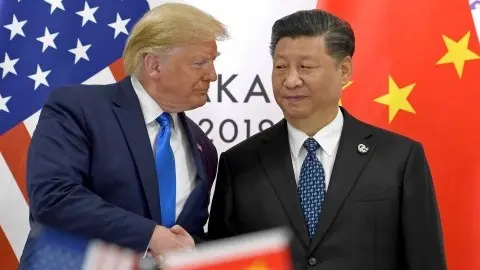China: Too soon to close a deal
At face value, President Trump and President Xi's side meeting at G20 was positive, but we're not that optimistic. The differences between the two sides indicate the trade and technology war is quite far from being resolved, instead the duo seem to be leveraging the meeting to show they have the upper hand in future negotiations
Xi and Trump met in G20, so?
Finally, the market can breathe a sigh of relief after China’s President Xi met US President Trump in a side meeting at the G20. But we are not particularly positive on the outlook following this meeting. At face value, the outcome of the meeting was positive, the US has put on hold its plans for even more tariffs on Chinese imports to the US, but it hasn't removed Huawei from the 'entity list'.
Interestingly, even though President Trump said that Huawei could do businesses with US companies that aren't critical to national security - what is or isn't in American national security interests isn't entirely clear. It is also probably that President Trump is facing pressures domestically to allow US companies to trade with Huawei.
President Trump also told the press that China is going to import a lot of US agricultural produce. However, according to official Chinese media, the section related to China’s exports to the US only states “US hopes China can import more from the US”.
Striving for publicity with little actual change
These differences indicate the two sides haven't used the side meeting to solve their trade and technology war, but instead are leveraging the meeting to show that they have the upper hand in future negotiations.
Returning to the technology part of the negotiation, as confirmed by Huawei, the meeting has done little to change the tough situation they are facing, which suggests that technology-related exports from China are likely to be considerably curtailed.
China likely to speed up tech development
As a result of all of this, we think China will continue to accelerate its own technology development in nanochips for smartphone’s operating systems and applications. Most importantly, China will aim to be a pioneer in 5G infrastructure and applications, striving for technology independence before exporting this technology.
This will mean a lot of investment will be required in addition to the announced fiscal stimulus-related infrastructure spending. We have therefore doubled the estimated amount of infrastructure spending (including telecommunication infrastructure) from CNY 2 trillion to CNY 4 trillion in 2019. Without this, the economy might not be able to achieve its 6% GDP target, as technology-related investments and exports will take a severe hit.
We believe China's GDP should be able to avoid falling below the 6% target, but some industries, especially export-related ones will be hurt, and jobs and wages may not remain as stable even if GDP does
Of course, such investment needs funding, and this would ordinarily push up interest rates if the central bank didn’t inject new liquidity into the banking system. We have already seen a liquidity injection of CNY 107 billion in June and CNY 550 billion a month earlier. This has pushed down overnight SHIBOR to below 1.0% - a level last seen in 2009.
We believe that when more investment projects kick off, there will be a new wave of funding requirements in 2H19, which will lead to a 0.5 percentage point cut in the RRR (required reserve ratio) in 3Q and 4Q. We are aware that RRR cuts are rigid policy tools so if the funding needs are temporary, the central bank may opt to increase liquidity using the medium-term lending facility. If these tools can contain rising interest rate pressures, the central bank may save interest rate cuts until last.
With all the measures mentioned above, we believe that China’s GDP will be able to avoid falling below the 6% target. But we still worry that some industries, especially export-related industries, will be hurt, and jobs and wages may not remain as stable even if GDP grows at 6%.
USD/CNY hasn’t been affected by the G20 but more by the dollar
USD/CNY has been more affected by a weak dollar than the outcome of the G20 meeting. We still expect USD/CNY and USD/CNH to move closer, and to reach 6.90 by end of 2019.
This publication has been prepared by ING solely for information purposes irrespective of a particular user's means, financial situation or investment objectives. The information does not constitute investment recommendation, and nor is it investment, legal or tax advice or an offer or solicitation to purchase or sell any financial instrument. Read more
Download
Download article
5 July 2019
July Economic Update: The Art of the Deal This bundle contains 8 Articles